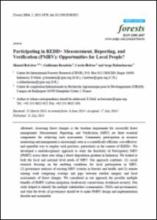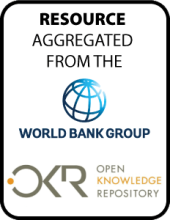Land Library Search
Through our robust search engine, you can search for any item of the over 73,000 highly curated resources in the Land Library.
If you would like to find an overview of what is possible, feel free to peruse the Search Guide.
/ library resources
Showing items 73 through 81 of 150.Land degradation through extensification of agriculture and overgrazing is an increasing problem across large expanses of the Ethiopian highlands that give rise to a loss in a range of ecosystem services.
Soil erosion due to accelerating runoff in various land cover types pose a serious threat to the long term sustainability of the fragile Himalayan landscape characterized by subsistence farming.
Land degradation through extensification of agriculture and overgrazing is an increasing problem across large expanses of the Ethiopian highlands that give rise to a loss in a range of ecosystem services.
Assessing forest changes is the baseline requirement for successful forest management. Measurement, Reporting, and Verification (MRV) are three essential components for achieving such assessments.
Environmental and social responsibility
is becoming more and more important in todayapos;s global
economy. There are thousands of environmental and social
codes and standards in the world today. The codes and
Bhutan has recently made significant
progress in sustaining economic growth and reducing poverty.
In 2012, average per capita household income was somewhat
under USD 2,400/year (Living Standards Measurement Surveys
The Millennium Ecosystem Assessment
(MEA), The Economics of Ecosystems & Biodiversity study
(TEEB) and the Intergovernmental Platform on Biodiversity
and Ecosystem Services (IPBES) provide a comprehensive and
Ukraine is renowned as the breadbasket
of Europe thanks to its black soils ( Chernozem black
because of the high organic matter content) which offer
exceptional agronomic conditions. One-third of the worldwide
This paper examines the determinants of
agricultural productivity and its link to poverty using
nationally representative data from the Nigeria General
Household Survey Panel, 2010/11. The findings indicate an




